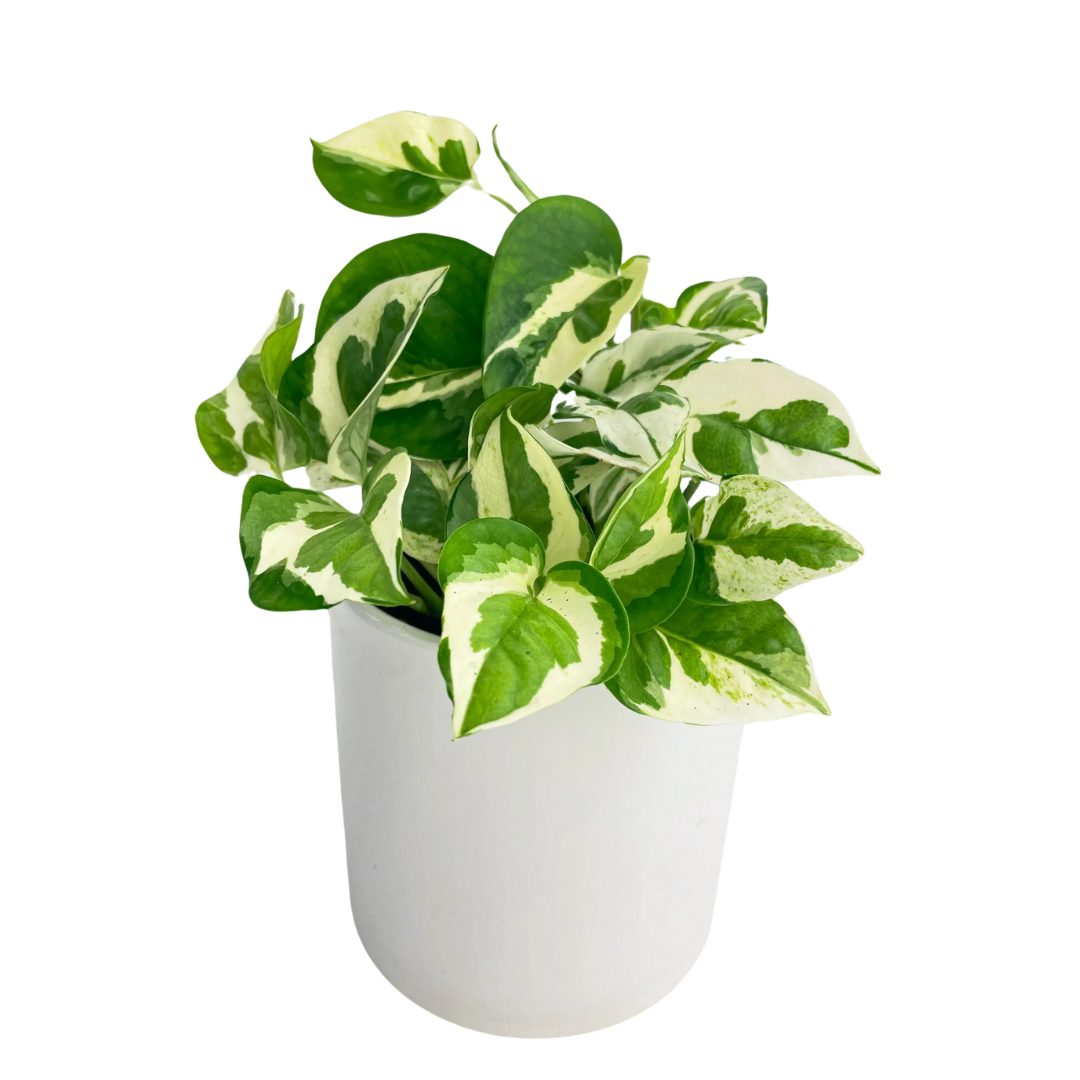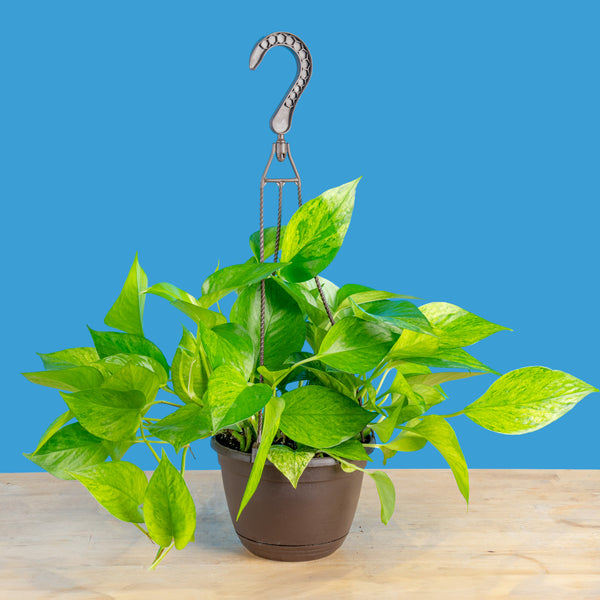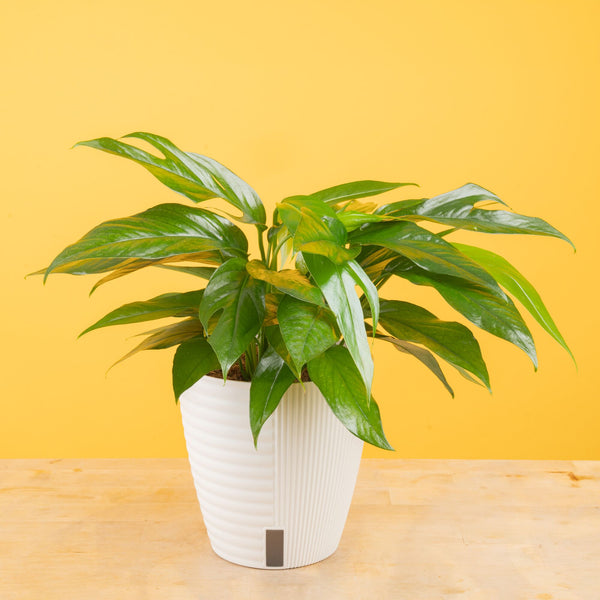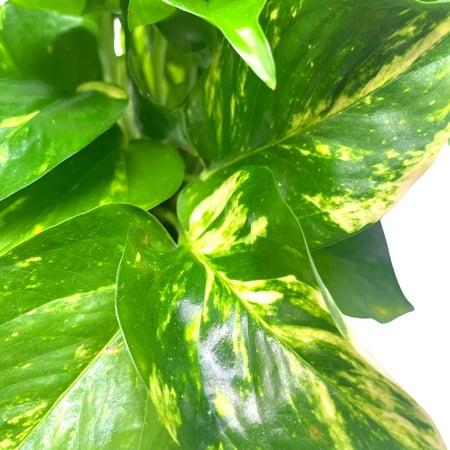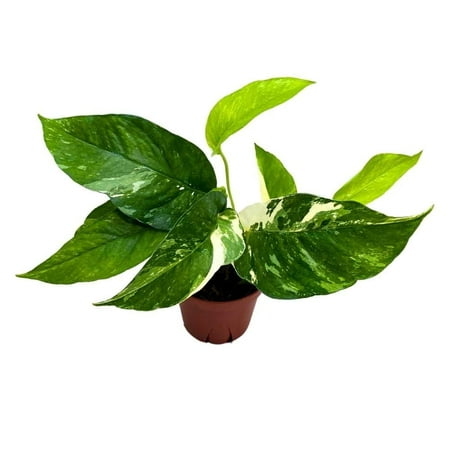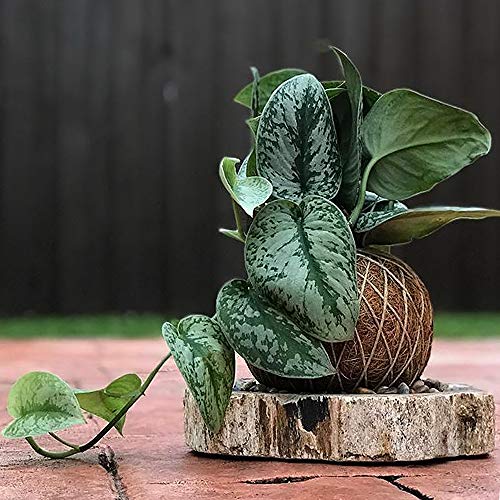7 Pothos Varieties — Devilishly Design-Friendly Houseplants And How You Can Display Them
A houseplant for new and experienced plant parents alike, it's time to choose these easy-to-care varieties for to create a lush tropical effect in your home
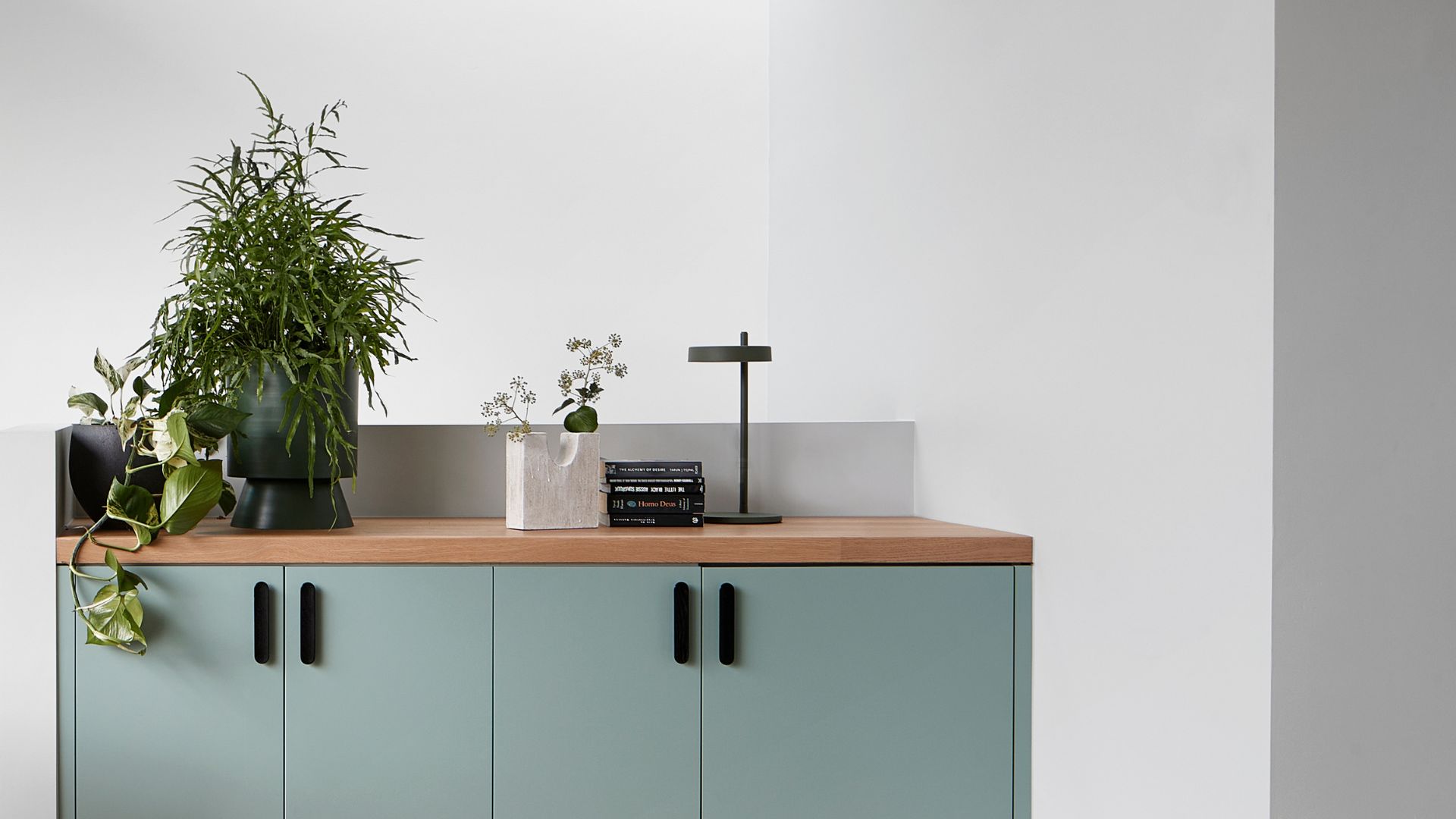
There are few houseplants deserving of the label indestructible, but pothos varieties are one of them. These easy plants will spill down from shelves, hanging baskets, and windowsills or climb up mossy poles or trellis to add an instant jungle vibe to your interior.
If you are interested in plantscaping your home to create eye-catching displays it's good to work with several different pothos varieties to get the desired look. These plants require little care, and once their attractive heart-shaped leaves get growing, there's no stopping them.
Pothos, also known as devil's ivy (and by its proper plant name, Epipremunum aureum), is generally considered to be one of the most popular houseplants. We asked pothos experts to choose their favorites, and here are their suggestions to help you make your choice. PS We've added general pothos care tips in one handy section at the end.
1. Pearls and Jade
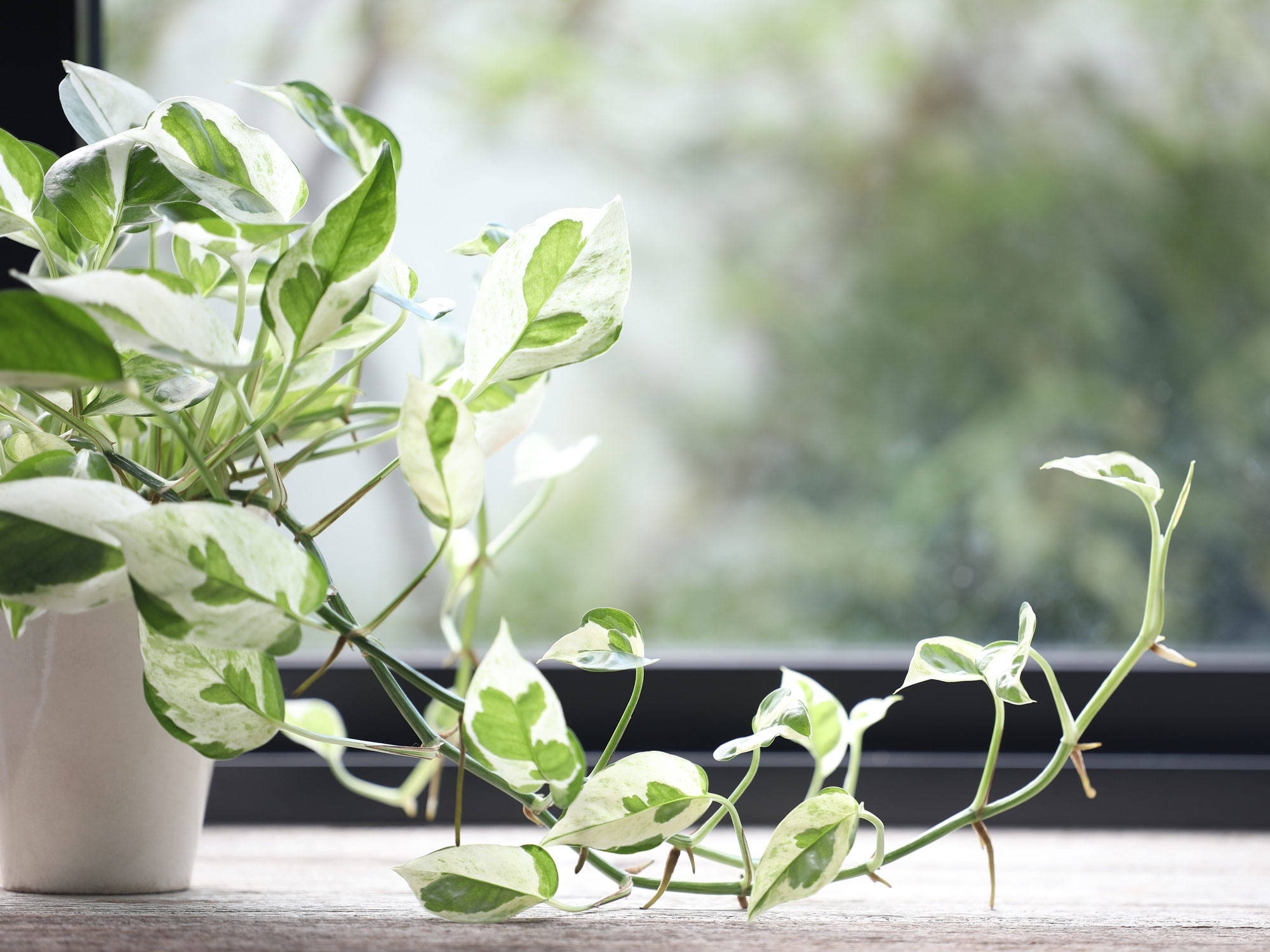
"I particularly like the Pearls and Jade pothos for its striking variegation and ease of care. It's awesome for beginners," says Megan Brame, host of The History of Plants podcast and founder of Plantrums. "I've been absolutely hooked on pothos for years. I've learned so much about their care, from what kind of light they love to the best ways to keep them happy and healthy."
Pearls and Jade were Megan's first pothos plants, so she has a soft spot for them. "I love its hardy nature and its ability to change variegation even on the same plant. My P&J is around seven years old now and has evolved from a striped variegation pattern to now being more speckled. It’s a fascinating evolution to watch on a single plant."
This plant is often displayed as a cascading plant, but it’s actually a really great indoor climbing plant. "I have mine weaving through a rod iron wall shelf and it loves to use the scrollwork as an anchor for its climb," says Megan. "If you’re worried about it getting damaged as a hanging plant, plant climbing clips are an option to consider."
2. Jessenia
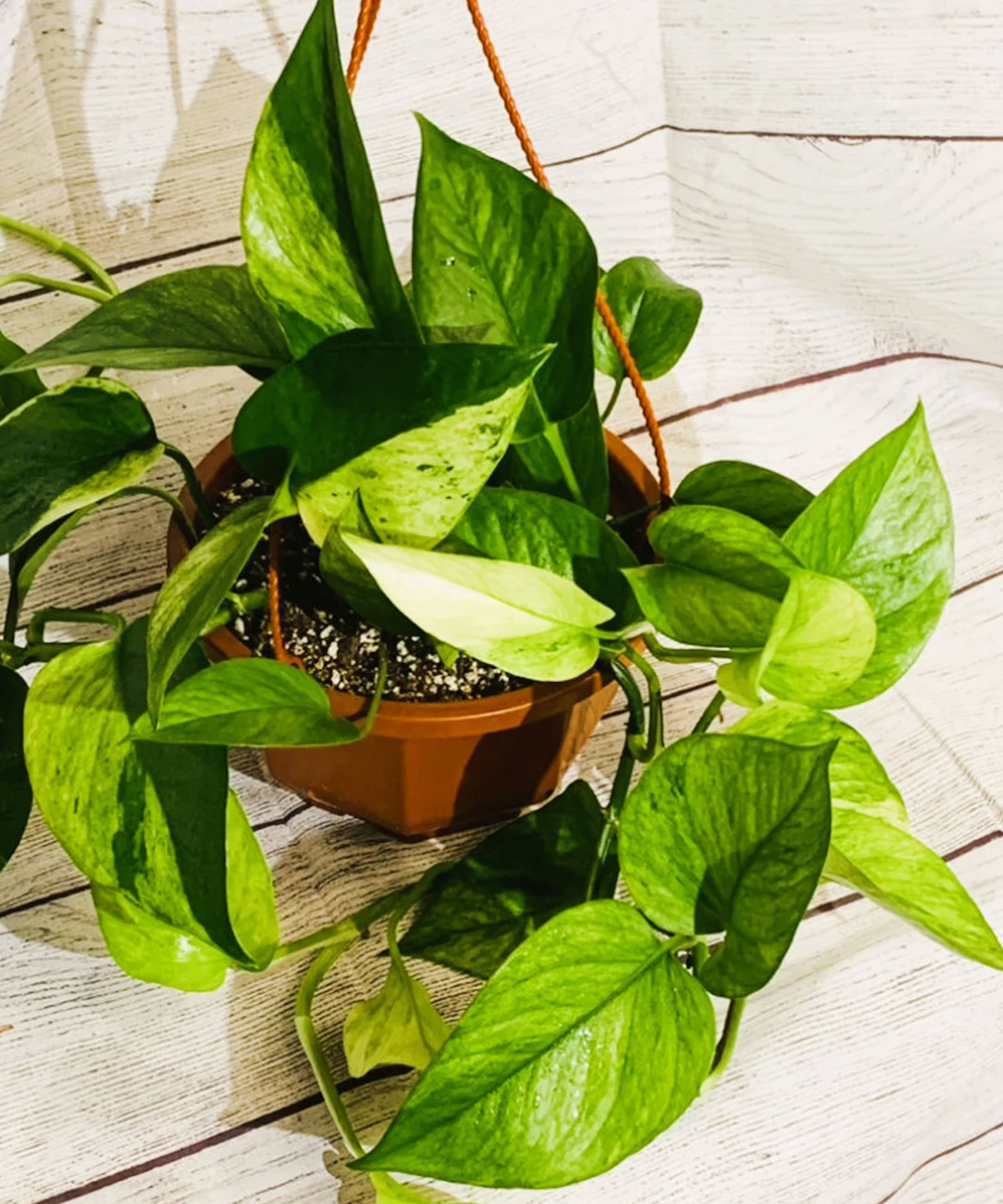
"For a more exotic species, I'd definitely recommend the Jessenia pothos for its unique, speckled appearance," says Megan Brame. "It's relatively new to the houseplant world, and it's got a beautiful variegation pattern, ranging from light green to yellow. Once it's settled into a spot that makes it happy, it'll grow like a weed."
One of the rarest pothos varieties, you may have to hunt around to find a Jessenia. This trailing tropical plant can grow up to 10 feet long. It tolerates low light conditions and well-draining soils.
If your plant's variegation starts to fade, increase its light. "Generally speaking, variegation begins to revert when the plant needs to reclaim space for photosynthesis. If there's less light than it needs, it'll begin to turn the leaves into a more solid green. If it has enough light (8-10 hours) then it'll keep the unique variegation and may even give up more leaf area to variegate."
If you're wondering why the leaves on your pothos plant are turning yellow it could also be due to light conditions such as too much sunlight or not enough.
Jessenia is another climbing pothos so can do well in a spot that has things for it to grab on to. "Try adding a small trellis to its pot to help coax it to grow up while another vine grows down, like over the edge of a shelf," suggests Megan. "That way, you'll get a really lush-looking set of vines that fill out the space nicely in both directions."
3. Baltic Blue
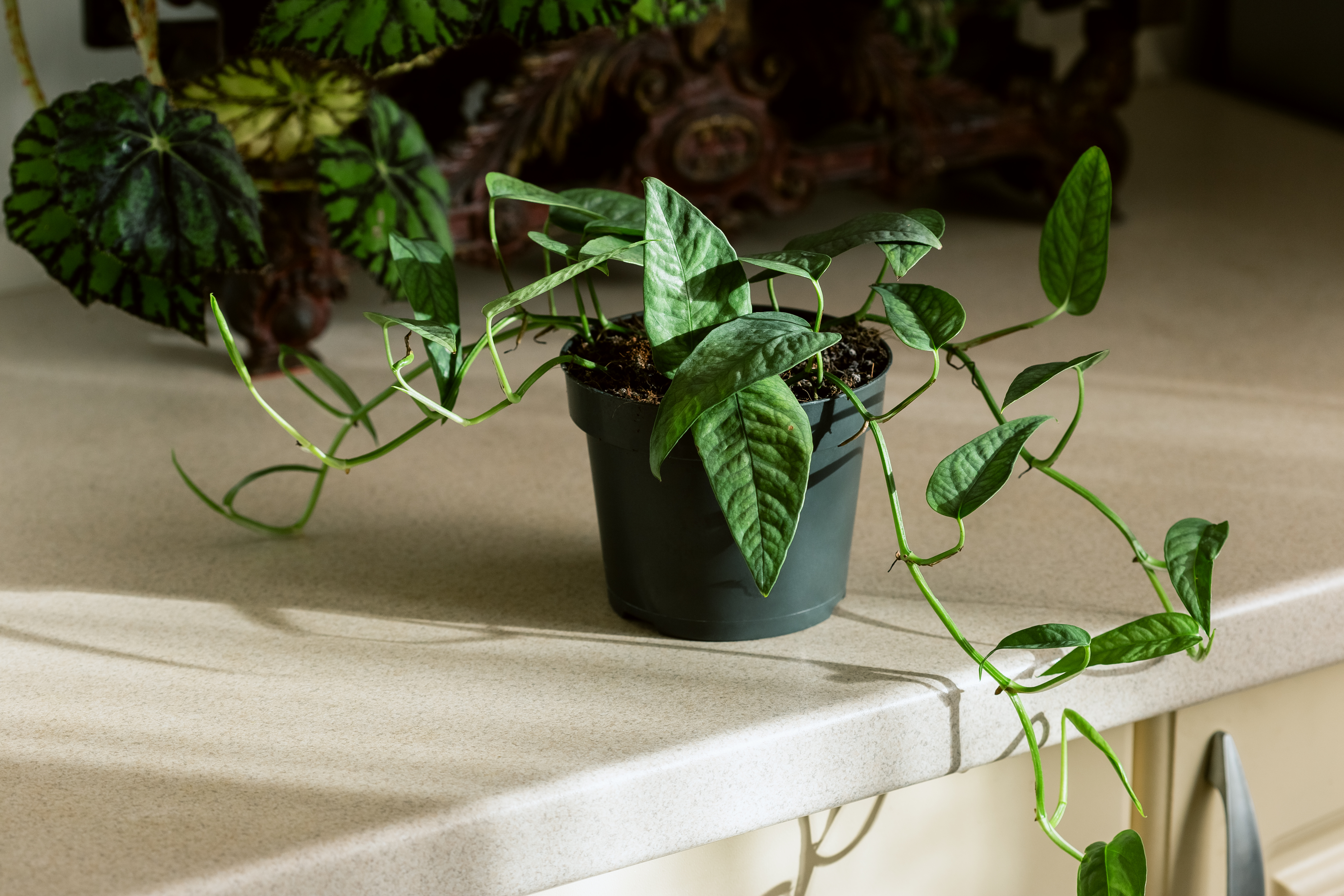
"One of my favorite varieties to use in our design work is the Baltic Blue pothos," says landscape designer Benjamin Hanley of Hanley Landscape Design, based out of Newport, RI. "It’s characterised by its dramatic green-blue foliage that deepens as the plant matures. The coloration starts lighter, then turns dark blue-green, a color that can be typically used in both light and dark aesthetics."
For lighter interiors, this blue houseplant can add a sense of grounding, and for darker spaces, it can beautifully match the color scheme. "It’s a versatile variety that can contrast light and neutral settings or blend into the darker, richer color schemes," says Benjamin. "In light spaces, try potting it with a dark metallic planter that highlights its foliage to create a sophisticated contrast. On the flip side, potting it in a natural wood or ceramic pot can add warmth and texture to a room with a darker aesthetic."
This particular pothos prefers bright, indirect light, which means near, but not directly on, a bright windowsill. Water it once or twice a week, or when the top inch of soil is dry.
4. Golden pothos
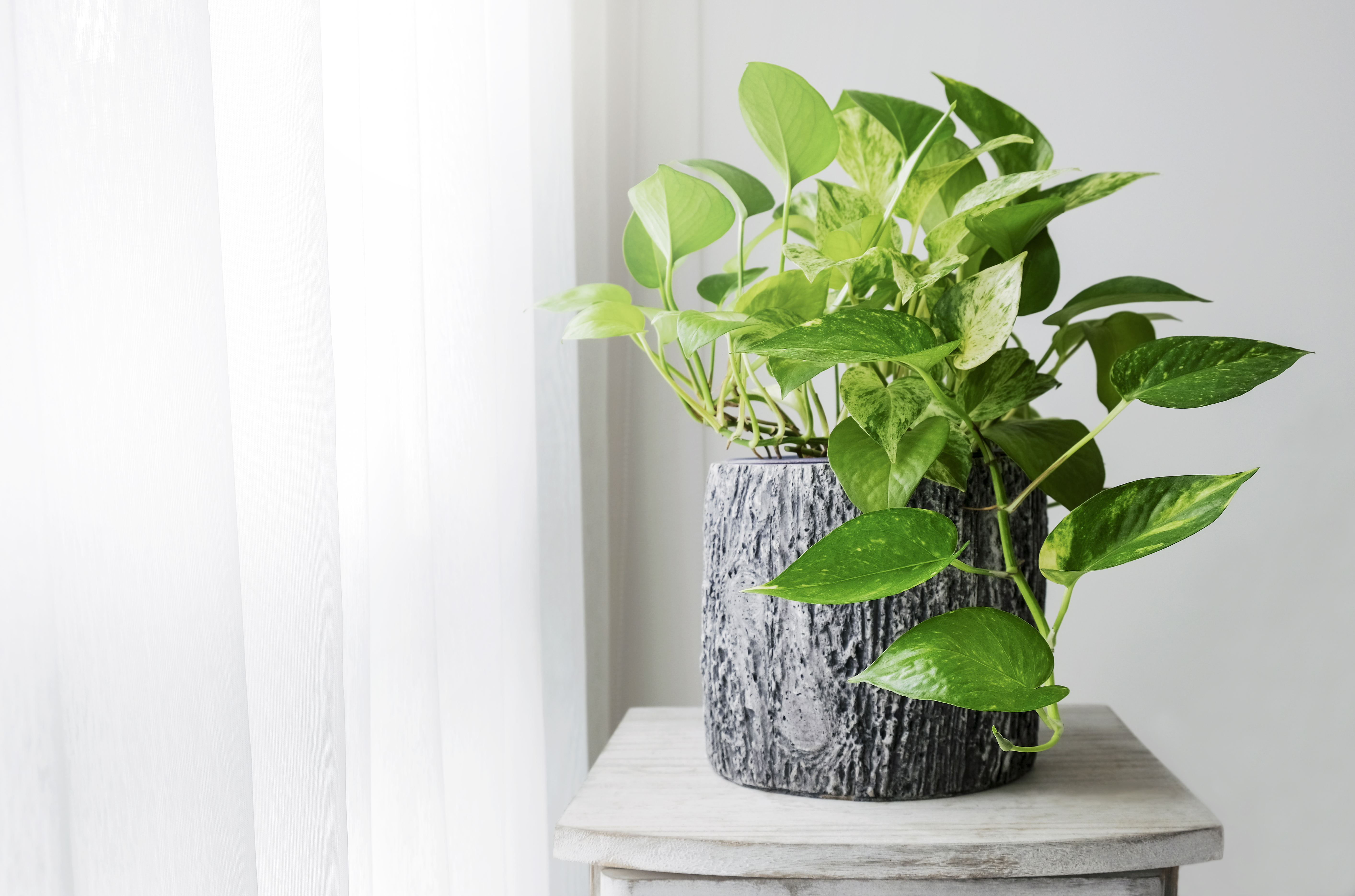
The best hydroponic houseplant and widely available of the pothos varieties is golden pothos (Epipremnum aureum, previously known as Scindapsus aureus). "Golden pothos is a favorite of mine because it’s low maintenance, simple to propagate, and has striking variegated leaves with splashes of yellow," says Benjamin Hanley.
One of the most popular house plants in North America, there are many different cultivars available with varying degrees of leaf variegation. Another reason for its popularity is that golden pothos plants help you sleep better, which is a great reason to add a new plant to your collection.
Golden pothos can grow in a variety of light conditions and typically only requires water every 1-2 weeks. "It’s also a plant that can bounce back from not being cared for," adds Benjamin. "It will droop when it needs water, allowing some time to be noticed before dropping leaves."
5. Manjula
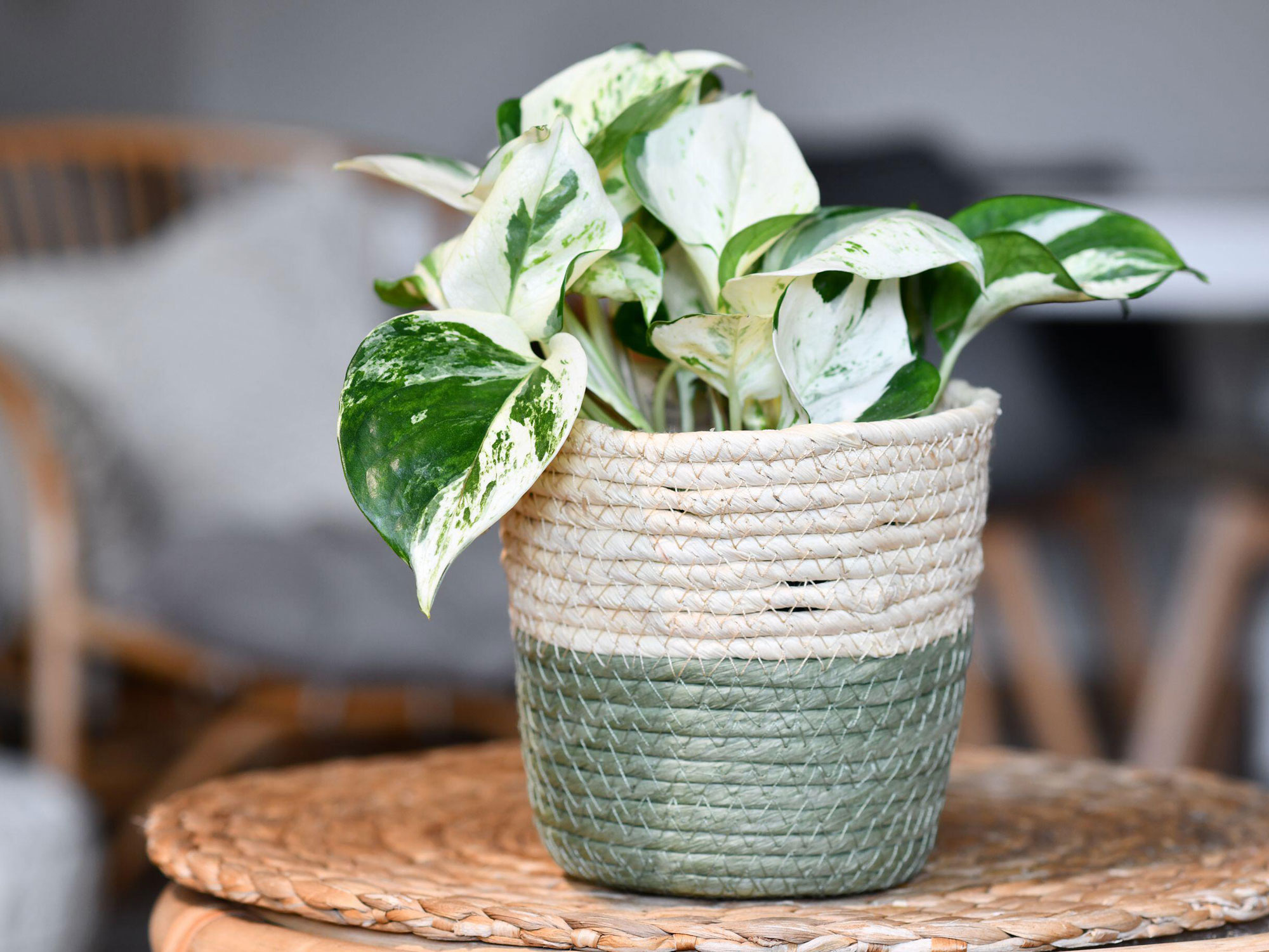
This handsome variety of pothos is super easy to care for despite its exotic appearance. One way to tell it apart from other pothos varieties is that the variegation is patchy rather than speckled, and is usually a combination of white, cream and green.
"Pothos are not your grandmother’s plants," says Kamili Bell Hill, creator of Plantblerd, founder of Black People with Plants and author of Happy Plants, Happy You!, available from Amazon. "There is tremendous cultivar variety in this plant species, and the styling possibilities are endless. One of my favorites is the 'Manjula' pothos. Each individual leaf looks like a heart-shaped watercolor masterpiece of different shades of green and creamy white."
Pothos generally like indirect, bright light. "However, the more variegated types, like the ‘Manjula’, need bright light to maintain their beautiful coloring," explains Kamili. "They are very forgiving and will survive if you forget the next watering. They propagate easily in water or soil, making them great to share with friends or simply to add more to your collection."
6. Marble Queen
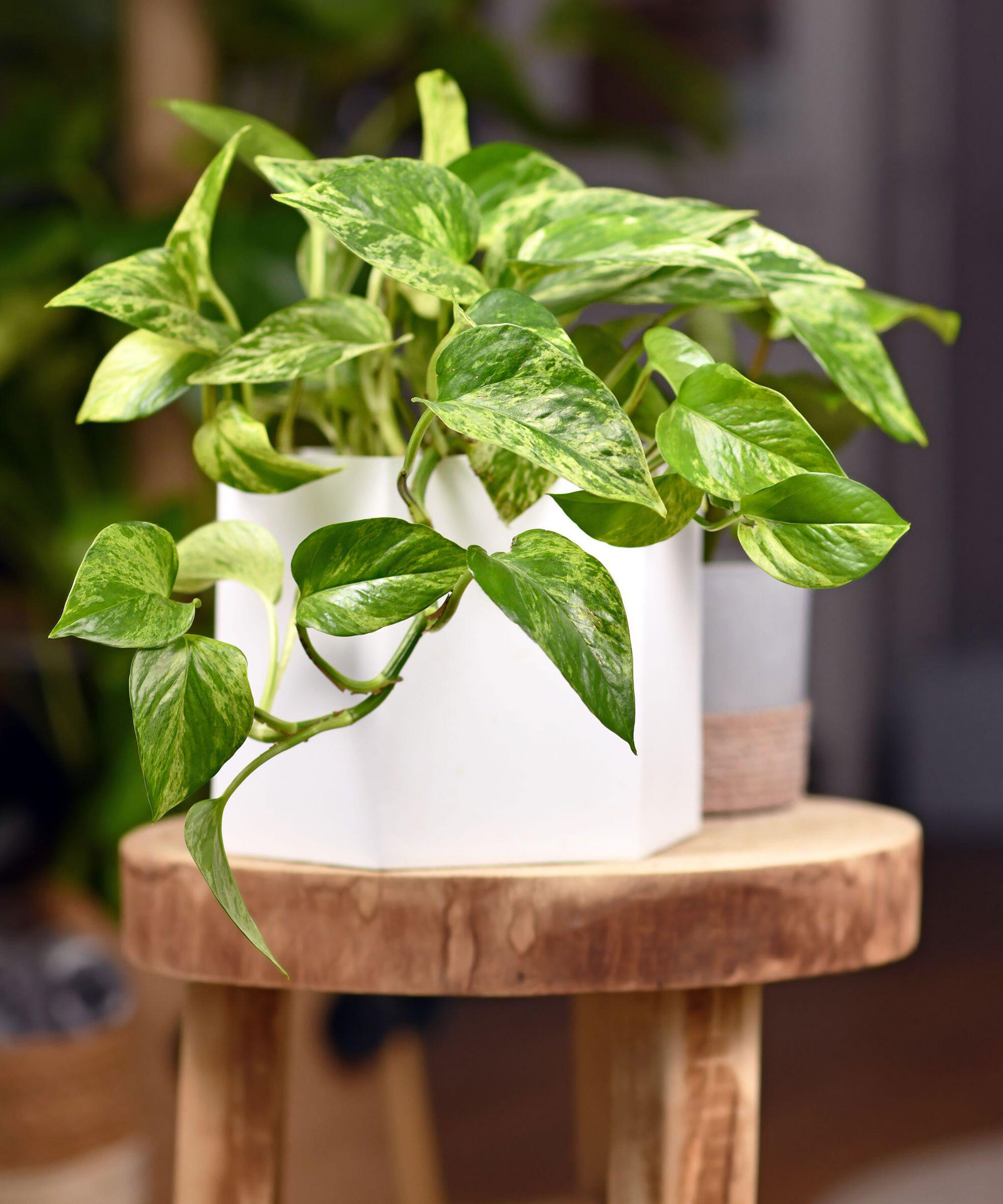
The beautiful swirling white and cream leaf variegation of Marble Queen makes it one of the most popular pothos varieties. The good news is there are things you can do to further enhance the stunning leaf coloration.
"I kept a Marble Queen on my balcony during the summer months," says indoor plant expert Darryl Cheng, author of the The New Plant Collector: The Next Adventure in Your House Plant Journey. "The leaves that grew during that time have a much richer cream color, resulting in more striking variegation."
The older leaves on Darryl's plant (the ones that grew indoors) have slightly less contrast and look a bit dull in comparison to the leaves that grew outdoors. Darryl suggests growing a pothos on a pole for a variation on the trailing look. "Try your hand at growing one up a moss pole. Do it well and you’ll be rewarded with huge leaves as the plant climbs up."
The pole needs to be filled with a medium that retains moisture so that the nodes can send roots into the moss. According to Darryl, sphagnum moss, which is like a string of little sponges, is best.
7. Satin pothos
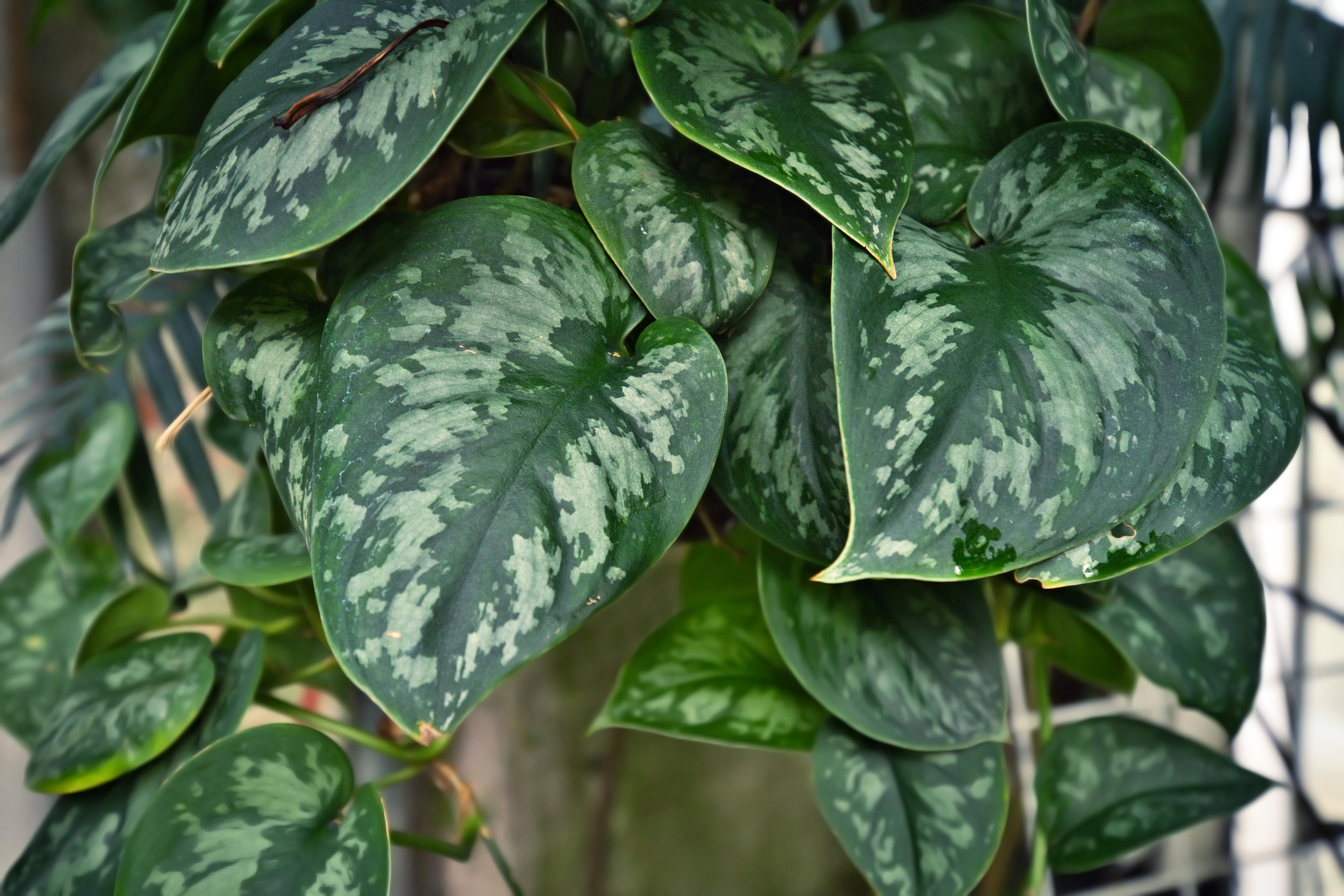
Now for one of my own favorite pothos varieties. Satin pothos gets its name from the shiny look of its heart-shaped leaves, and for this reason it's also known as silver pothos. These tropical beauties look great cascading from hanging planters. I have a couple trailing down from a tall shelf in my bathroom, as this variety loves more humid conditions.
It's worth pointing out that they seem to grow bigger leaves if you let them climb up a moss pole, so if you have the space, try growing them this way. Personally, I like the dainty, smaller leaves of satin pothos, particularly for a smaller space like my bathroom.
As you would expect from plants naturally at home in the rainforest, these pothos varieties thrive in indirect bright light and well-draining, slightly moist soil. If they don't get enough light the lovely markings on the leaves can fade, so keep an eye on the variegation to check your plant's needs are being met.
FAQs
What are the general care requirements for pothos plants?
We asked Megan to share her thoughts on the general care requirements for pothos plants and this is what she tells me:
Light: Pothos like bright, indirect light. Mine live a few feet from a south-facing window with slat blinds and thrive quite nicely.
Temperature: Don’t let it drop below 50°F. They’re a tolerant plant but even they get chilly.
Watering: Dip your finger into the soil. If the first knuckle comes back clean then it’s time to give your plant a drink. If it comes back with soil on it, there’s still moisture in the soil so you’re good.
Humidity: They’re pretty chill plants so can usually do around 50-70% humidity. If your house gets dry during winter, try grouping plants together to raise their collective humidity.
Fertilizer: I use Jack's Classic 20-20-20 All Purpose Water-Soluble Fertilizer, available on Amazon, diluted in rainwater, and will feed it once a month during the growing season (spring and summer). During winter I cut off the plant food. We all need some downtime and plants are no different.
Soil: Chunky soil works great because it allows air to hit the roots, which is super important for growth. If you want to use a soil blend from a big box store, that’s fine. Just tamp the soil down by gently hitting the bottom of the pot on a table a few times instead of pushing the soil down with your hands. This will anchor the plant enough to keep it in the pot while still keeping the soil loose and well-draining.
Pothos are a great addition to the home because their ease of care, adaptability, and air-purifying qualities (it's known as one of the best houseplants that clean the air) make them a perfect choice for plant lovers of all levels. Whether you let them trail from shelves or room dividers or let them climb up mossy poles, they will enrich the décor of your home.
"Pothos aren't as fussy about humidity so they do fine in most rooms around the house," says Megan Brame. "The only things to keep an eye out for is keeping them away from drafty windows and monitoring your room's humidity in the winter. Houses can drop as low as 25-30% humidity because of the hot, dry, air circulating, so look for signs that your pothos needs a little more moisture, such as brown, crispy leaf edges, or shriveled and misshapen leaf growth."
The Livingetc newsletters are your inside source for what’s shaping interiors now - and what’s next. Discover trend forecasts, smart style ideas, and curated shopping inspiration that brings design to life. Subscribe today and stay ahead of the curve.
Lifestyle journalist Sarah Wilson writes about flowers, plants, garden design and trends. She has studied introductory garden and landscape design and floristry, and also has an RHS Level 2 qualification in the Principles of Plant Growth and Development. In addition to homesandgardens.com and livingetc.com she's written for gardeningetc.com, Real Homes, Modern Gardens and Country Homes & Interiors magazines. Her first job was at Elle magazine, during which time a trip to the beautiful La Colombe d'Or in St-Paul-de-Vence led to an interest in writing about all things botanical. Later as lifestyle editor at Country Homes & Interiors magazine the real pull was the run of captivating country gardens that were featured.
